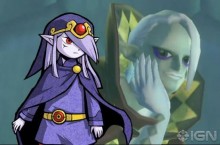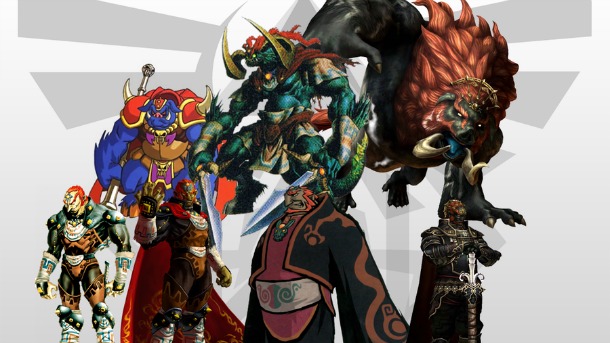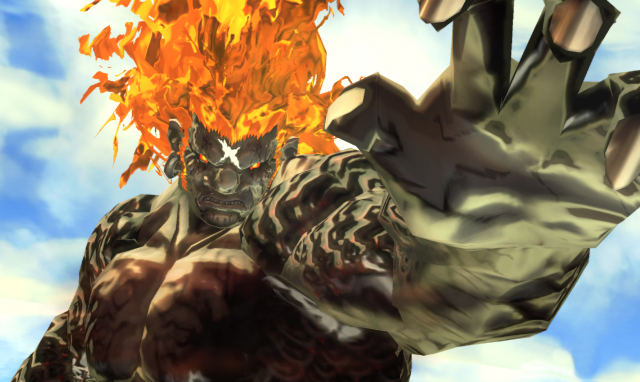The best and worst of Zelda antagonists
Posted on August 06 2013 by Brian Frost
 You hate him, he makes your life difficult, and it feels great to cut him down. Yes, the main villain is just as important as our protaganist, because what would Link be without a world to save? From Ganon to Ghirahim, we all have our favorites, but which games did it best? Click the jump to read more!
You hate him, he makes your life difficult, and it feels great to cut him down. Yes, the main villain is just as important as our protaganist, because what would Link be without a world to save? From Ganon to Ghirahim, we all have our favorites, but which games did it best? Click the jump to read more!
You may have noticed that the Zelda games (Barring the first two) follow a formula for introducing their antagonists. We’ll first hear of him in text or see him somewhere towards the beginning of the game, and he is, of course, doing anything and everything evil. Perhaps the first thing we see is Ganondorf riding away from Hyrule with a frightened Zelda, or perhaps it’s the skull kid screwing with our horse when we’ve barely just pressed play. Whatever it is, it gives us us purpose. Why are we on this quest, and why do I want him, whoever he is, dead? From then on we feel a connection to the villain, and seeing him or hearing of him every now and then reminds us what we are really after.
It all boils down to absolute evil in the Zelda series. It would radically change the experience if the villain wanted to take over the world solely for the purpose of saving the dolphins or helping the poor. We never see even the slightest gleam of any potential good in a Zelda villain, because it would ruin the complete satisfaction of beating him. We feel no sorrow when we see Ganon fall, because we’ve seen nobody affected positively by him. Knowing this, the opposite works just as effectively in getting you to hate a villain even more. Through some well done character development, you may just end up despising the villain more than anything else. For this reason, Nintendo uses recurring villains to add what I refer to as inter-game development. A sense of familiarity with the bad guy reminds you of all the evil he’s done in the past.
For instance, when you first see Ganondorf in The Wind Waker, your brain immediately thinks EVIL. We know him. He’s the same guy who shrouded Hyrule in darkness last time. It’s that guy again. He requires no introduction to the long time fans; his face alone screams destruction. But still, we go through those ever necesarry stages of introduction. We learn that he’s kidnapped our little sister, and then he takes Zelda away, and then, as if that weren’t enough, he tries to take over the world! The next time we see him in Twilight Princess, we remember all of this as well, and there’s no doubt in our minds: this man is pure evil.
We can speak similarly about the monster that plagues you constantly throughout the first three games of the series: Ganon. Anybody who has played The Adventure of Link understands that unbelievable frustration that the words “RETURN OF GANON” bear, and the boss fight against him in A Link to the Past was good enough to be reused in Link’s Awakening. But why is he such a great villain? He wasn’t really developed within the first two games, and in Ocarina of Time his appearance is semi-random. Yet we still feel this unbearable need to wipe him out. Is it his character design? He certainly looks terrifying. Or is it really just the fact that his death symbolizes the achievement of our ultimate goal? Perhaps it’s a bit of both, but either way, he sticks in our minds just the way he should.
Yes, Nintendo has done a good job at creating recurring villains in many of their franchises, but do their one-time villains live up to those same standards? I would argue that in many cases, they do. A fine example is Majora, who really wouldn’t fit well in most of the other games in the series, but works perfectly with the strange setting of Majora’s Mask. We see the mask before we even start the game, and immediately sense some evil in its humongous eyes and eerie colours, and throughout the game, we are told stories about Skull Kid’s interactions with it by our friend Tatl. Within the handheld games, I think Spirit Tracks does a wonderful job with the Demon King Malladus, and Minish Cap was the first game to really develop Vaati as a character, and they did so fantastically. All of these amazing games considered, I would still say that probably the best use of antagonists comes from a rather unexpected place: our friends over at Capcom.
Oracle of Seasons and Oracle of Ages combine the old with the new. The games introduce Onox and Veran (the only female antagonist in the series to my knowledge) respectively, who are both interesting people with interesting purposes. They are purely horrible, with no sign of sympathy for anybody around them; true villains through and through. Then, after you beat both games, you are given the chance to fight the dreaded Twinrova and Ganon that we all know so well. In my opinion, this was a perfect usage of the not only the characters, but the ability to link the games together. Not only does each game develop its villain separately, but together, they develop Twinrova, who revive, once more, our long lost foe Ganon. I would say this was a brilliant idea that was carried out as well as possible, not only from a gaming standpoint, but also in terms of marketing. It makes you desire both games, not just one, similar to what Pokemon does in each of its generations. Kudos to Capcom on some great work.
But sadly, my opinions aren’t all positive, and how could they be? In a 16-game series, I’m bound to dislike at least one villain, right? Well… sort of. The only game that really comes to mind is Skyward Sword.
I can hear the complaints already, so I’ll start this off by saying this: I love Ghirahim. He was different from Ganondorf, and I appreciated that quite a bit. He was creepy, I loved to hate him, and the fight against him towards the end of the game was exciting. Here’s the thing though; I wish that was it. But out of nowhere came Demise for one boss battle, and one boss battle only. No development, nothing. He was just there. Yes, I understand he’s important to the timeline, and yes, I thought his boss fight was cool, and yes, he was mentioned. plenty and you fought The Imprisoned three times, but it didn’t feel right. When you fight the final boss, that’s when all of that hatred you’ve built up for him the entire game comes out. In this case, it just felt like work. I already beat the one I cared about, and all of my hatred got used up. It’s almost anticlimactic. I think Demise’s only purpose was so they could solidify a timeline, and I didn’t really appreciate that. Still It’s all my opinion, and feel free to disagree if you wish.
Just for the sake of ending on a good note, I’d like to talk about a real odd ball in the mix. Link’s Awakening shows that there doesn’t need to be an antagonist at all. In fact, there wasn’t even one final boss! Yet I felt that the game still made me feel like there was some purpose and some evil to destroy, and in the end, that’s all you really did: destroy some evil. And I didn’t even mind! I know it’s strange after that paragraph about the importance of developing your final boss, but this game figured it out, simply by developing everything else so close to perfectly.
So now I’d really like to know what you guys think! Where do you agree or disagree with me? Which villains left more to be desired? Do you prefer the recurring classics, or something new to change up the pace? How do you think they’ll go about determining a villain for the new Zelda games? Leave your comments below!





